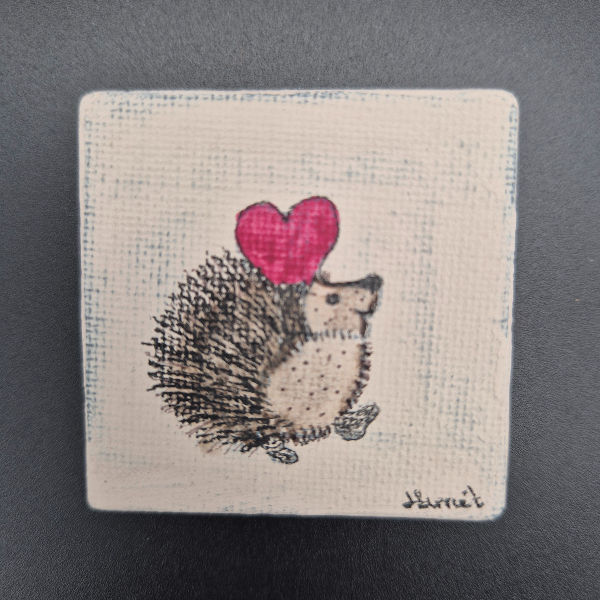How can you help hedgehogs right now?
- Hedgehog Sanctuary

- Oct 19, 2019
- 4 min read
Here are some ideas that you can actively do to help hedgehogs in and around your garden.

Build a log pile
Simple to build, the list of animals that are attracted to rotting wood is almost endless. Many of these are insects, which is food for hedgehogs. A big woodpile will also provide potential nesting and hibernation sites. The bigger you can make it the better. As the wood rots down, replenish the logs from time to time.
Let plants go wild
A great hedgehog garden will provide both abundant invertebrates (hedgehog food) and places for hedgehogs to rest or nest. Leave a corner of the garden untended and watch the plants thrive, providing nectar for insects and shelter for visiting hedgehogs. One may even choose to nest there. Leave some of this vegetation standing over winter too.
Make ponds safe
A pond is one of the absolutely top features for attracting wildlife into your garden. It will provide feeding opportunities for hedgehogs and a vital water supply during dry spells. Hedgehogs can drown in steep-sided ponds or pools. Ensure you make yours safe by building a pebble beach or using a piece of chicken wire draped over the side. If you are planning a new pond, try to ensure it has gently sloping sides.
Check before strimming
Please be careful when using any cutting equipment in your garden. Strimmers are particularly dangerous as these can wound or kill hedgehogs hiding or nesting in long vegetation. Unlike other animals, they will not run away if they hear the noise of machinery.Before undertaking the work, check in long patches of grass, along rough edges and under hedges. If you do discover a hedgehog, either postpone your work or carefully move it (using thick gloves!) to a safer place in the garden.
Stop using chemicals
Slug pellets are toxic and may be very damaging to hedgehogs. In a healthy garden, natural populations of wild animals will keep levels of slugs and snails down, along with other insect pests, making chemicals unnecessary. Herbicides reduce worm densities in your lawn and should also be avoided. In very wet years try nematodes to keep on top of mollusc outbreaks.
Before burning bonfires
A bonfire is a very attractive nesting or hibernation site for a hedgehog. Hedgehogs will be attracted to them at any time of year, so it’s best to be careful if you plan to burn yours. Nesting hedgehogs are very difficult to find – far better to rebuild the pyre on the day of burning and you’ll ensure no animals are trapped inside.
Providing food
Provide meat-based dog or cat food, unsalted, crushed nuts or Mealworms, Bananna Chips, Hedgehog Muesli, and Hedgehog Food (all of which we sell and helps the hedgehogs we look after). This will only be used by local hedgehogs as a supplement their natural food, and it won’t affect their behaviour in a damaging way. If you are worried about foxes or pets getting at the food, you can make a simple feeding station that will keep them out. If you see hedgehogs active mid-winter, supplementary food could be a crucial life-line. Spring is another critical period for proving food.
Hoglets
Baby hedgehogs are called hoglets. They can appear from June, right into autumn. Up until around five weeks old, hoglets will remain in the nest with their mother. If you suspect you have a maternity nest then it’s best to leave it well alone, as disturbed mothers may desert or eat their young. It’s very unusual to see very small hedgehogs out and about on their own – be sure that there are no adult animals nearby and then get in touch with Hornbeam Wood Hedgehog Sanctuary (HWHS) on 07999 573513 (10am-9pm any day of the week) or the British Hedgehog Preservation Society (BHPS) on 01584 890801.
Hibernation
Hedgehogs typically hibernate between October and April, choosing a sheltered spot to build a nest. This might be in the compost heap, in the middle of a dense bush or under the shed. If you accidentally disturb a nest with an adult hedgehog in it, replace the nesting material (we sell air dried hay which is superb nesting material and helps the hedgehogs we look after). The hedgehog can then either repair the nest or build another elsewhere. Underweight animals will remain active longer as they try and put on weight – give them a hand with a plate dog or cat food and a dish of water or some Mealworms, Banana Chips, Hedgehog Muesli, and Hedgehog Food (all of which we sell and helps the hedgehogs we look after).
Link your garden
Hedgehogs need to roam through many, many gardens to find food and mates. No single garden is large enough in isolation. Barriers such as solid fences and walls often prevent their movement. Hedges and natural boundaries are better for hedgehogs as they allow them to roam free and can provide shelter. If you already have a wall or fence try creating a small hole, 13cm by 13cm, which will enable hedgehogs to move between yours and your neighbors gardens, without encouraging pets to wander.
Garden safety
Loose netting can entangle hedgehogs – ensure it is kept taught or stored inside when not in use. Avoid leaving sheds open as hedgehogs may wander inside and become trapped. Ensure drains are safely covered. Hedgehogs are rather prone to getting stuck down holes!
























